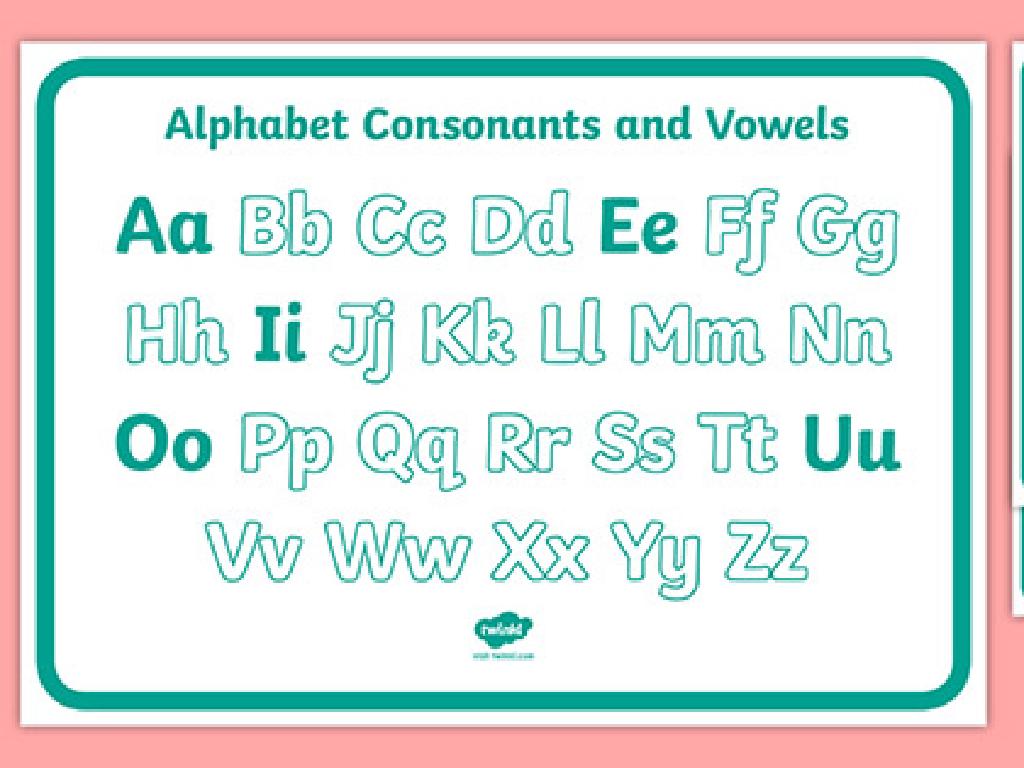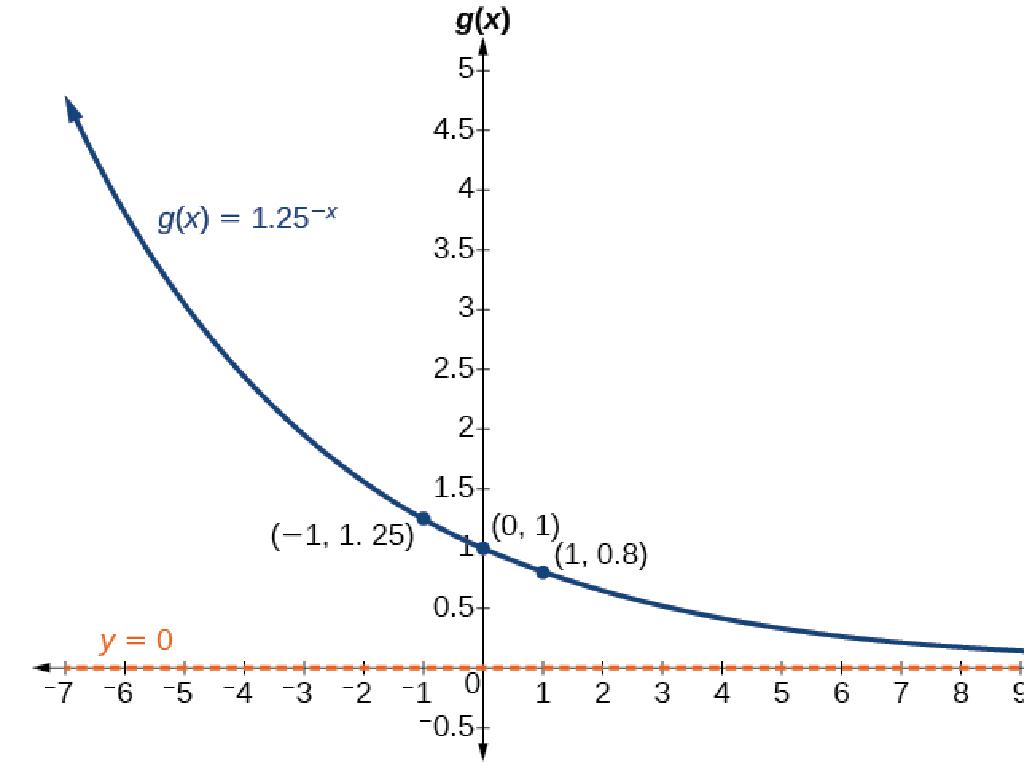Compare Passages For Tone
Subject: Language arts
Grade: Eighth grade
Topic: Author'S Purpose And Tone
Please LOG IN to download the presentation. Access is available to registered users only.
View More Content
Exploring Author’s Purpose and Tone
– Understanding author’s purpose
– Why did the author write this? To inform, persuade, entertain, or explain?
– Tone influences meaning
– Tone is the author’s attitude. It can be joyful, serious, humorous, sad, threatening, formal, informal, pessimistic, or optimistic.
– Preview: comparing passages
– We’ll look at how different tones affect the reader’s perception.
– Activity: tone analysis
– Find passages with contrasting tones and discuss how they affect you.
|
This slide introduces the concept of author’s purpose and tone, which are crucial for understanding and interpreting texts. The purpose can be to inform, persuade, entertain, or explain, and the tone is the attitude conveyed through word choice and style. Students will preview the skill of comparing passages to identify how tone can change the meaning or impact of a text. As an activity, students will analyze passages with contrasting tones to explore how they influence the reader’s emotions and understanding. Encourage students to think critically about how tone shapes their interpretation of a text.
Understanding Author’s Purpose
– Define Author’s Purpose
The reason an author decides to write about a specific topic.
– Common purposes in writing
To inform, persuade, entertain, or explain something to the reader.
– Examples from literature
Informative texts provide facts, persuasive texts aim to convince, narratives entertain, and expository texts explain.
– Analyzing purpose and tone
How does the author’s purpose affect the tone of the text? Let’s discuss.
|
This slide introduces the concept of Author’s Purpose, which is a fundamental element in understanding literature and various texts. It’s crucial for students to grasp that authors write with specific intentions, which can be categorized broadly into informing, persuading, entertaining, or explaining. Provide examples from different genres to illustrate these purposes, such as a newspaper article (to inform), an advertisement (to persuade), a novel (to entertain), or a how-to guide (to explain). Encourage students to consider how the author’s purpose shapes the tone of a passage, whether it’s serious, humorous, formal, or casual. Discuss how identifying the purpose can enhance comprehension and critical thinking about what they read.
Identifying Tone in Literature
– Understanding tone in writing
– Tone reflects the author’s feelings about the subject
– Tone is revealed through word choice
– Adjectives, verbs, and adverbs often convey tone
– Practice: Reading aloud for tone
– Read a passage aloud to identify emotional cues
– Analyzing tone enhances comprehension
|
This slide introduces the concept of tone, which is crucial for understanding an author’s purpose and attitude towards the subject matter. Tone is often conveyed through the author’s choice of words, particularly adjectives, verbs, and adverbs that carry emotional weight. To practice identifying tone, students will read a passage aloud, focusing on the emotional cues in the language used. This exercise helps students to hear and feel the tone, making it easier to identify and analyze. Encourage students to consider how tone affects their interpretation of a text and to discuss how different words could change the tone of a passage. This activity will enhance their overall reading comprehension and analytical skills.
Tone vs. Mood: Understanding the Difference
– Tone: Author’s attitude
– Tone is conveyed through word choice, viewpoint, and syntax.
– Mood: Reader’s feelings
– Mood is the emotional atmosphere, influencing how we feel as we read.
– Examples from known texts
– ‘The Great Gatsby’ shows a nostalgic tone, creating a wistful mood.
– Class exercise on tone and mood
– Analyze passages to determine the author’s tone and the resulting mood.
|
This slide aims to clarify the distinction between tone and mood, which are often confused. Tone refers to the author’s attitude towards the subject, which can be detected through their choice of words and the style of writing. Mood, on the other hand, is the emotional response that the reader has to those words. Provide examples from texts the students are familiar with to illustrate the difference. For the class exercise, select passages where tone and mood are evident and have students identify and discuss them. This will help students to not only recognize the author’s tone and mood in literature but also to consider how these elements affect their own engagement with a text.
Comparing Passages for Tone
– Identifying tones in texts
– Tone reflects the author’s attitude towards the subject.
– Comparing purpose and tone
– Purpose is ‘why’ and tone is ‘how’ the author conveys the message.
– Activity: Analyze two passages
– Read provided passages, noting descriptive words indicating tone.
– Discuss each passage’s tone
– Share your thoughts on the tone and how it influences the message.
|
This slide introduces students to the concept of tone in literature and how it differs from the author’s purpose. Tone is the emotion or attitude that the author expresses towards the topic, which can be identified by specific word choices and writing style. The author’s purpose is the reason behind writing the text, such as to inform, persuade, entertain, or explain. The class activity involves reading two distinct passages and analyzing the tone of each. Students should look for descriptive words, the mood set by the author, and the overall feeling conveyed by the text. After reading, students will discuss their findings, comparing and contrasting the tones of the two passages. This exercise will help them understand how tone can shape the reader’s perception of the text. The teacher should prepare diverse passages that clearly exhibit different tones for the activity and guide the discussion to ensure all students grasp the concept of tone.
Analyzing Tone Through Word Choice
– Diction’s impact on tone
– How word choice influences the reader’s feelings and the atmosphere
– Interpreting connotative language
– Connotative language carries an emotional association or secondary meaning
– Group activity: contrasting passages
– Compare the diction of two passages to determine the tone
– Discuss findings and interpretations
– Share insights on how diction shapes the reader’s experience
|
This slide introduces the concept of analyzing the tone of a text through the author’s choice of words, known as diction. Emphasize the importance of connotative language, which goes beyond the literal meaning of words to include the emotions and associations they evoke. The group work activity involves students working together to analyze the word choice in two contrasting passages, identifying how the authors use diction to create different tones. After the activity, students will discuss their findings, allowing them to understand and interpret the impact of word choice on tone. Provide guidance on how to approach the analysis and encourage students to consider the emotional weight of words when discussing their effects.
Tone in Multimedia
– Tone beyond writing
– Tone is conveyed through speech and visuals, not just text.
– Analyzing multimedia tone
– Compare tone in writing to tone in speeches and videos.
– Class activity: Video tone analysis
– Watch a selected video and observe the speaker’s tone.
– Discussing speaker’s tone
– Share observations on how the speaker expresses tone.
|
This slide introduces students to the concept of tone in various forms of media, including speeches and videos. Tone, the attitude or emotion of the author or speaker, can be conveyed through word choice, inflection, facial expressions, and body language. The class activity involves watching a video to identify and discuss the speaker’s tone. Possible videos could include famous speeches, movie clips, or TED Talks. Students should be encouraged to note how the speaker uses their voice, pace, and body language to convey tone. After watching, facilitate a discussion where students share their observations and reflect on how tone influences the message. This activity will help students understand that tone is a crucial element of communication in all mediums.
Class Activity: Exploring Tone in Literature
– Group tone comparison task
– Present findings to class
– Discuss tone’s impact on perception
– How does a writer’s tone influence your feelings about a topic?
– Reflect on the activity
– Think about what you’ve learned from this exercise.
|
This class activity is designed to help students understand the concept of tone in literature and how it can affect the reader’s perception. Divide the class into small groups and assign each group two passages by different authors on the same topic. Students will analyze the tone of each passage and discuss the differences within their groups. They will then present their findings to the class, focusing on how the tone influenced their understanding and feelings about the topic. Encourage a class discussion on the importance of tone and its effects. As a teacher, provide guidance on how to identify tone and facilitate the discussion to ensure all students are engaged. Possible activities for different groups could include comparing tones in news articles, speeches, or fictional narratives to provide a variety of contexts and tones.
Wrapping Up: Author’s Purpose & Tone
– Recap: Purpose & Tone
– Homework: Compare tones in essays
– Write an essay on the tone of two different articles.
– Use text evidence for support
– Cite specific phrases that reflect the tone.
– Prepare for next class discussion
|
As we conclude today’s lesson, remind students of the key concepts we’ve covered regarding how authors convey purpose and express tone in their writing. For homework, students are to write a short essay comparing the tone of two articles, using evidence from the texts to back up their analysis. Encourage them to look for specific words, phrases, and stylistic choices that indicate the author’s tone. Remind them to explain how these elements contribute to the overall feeling or attitude of the text. In the next class, be prepared to facilitate a discussion where students can share their insights and learn from each other’s analyses.






